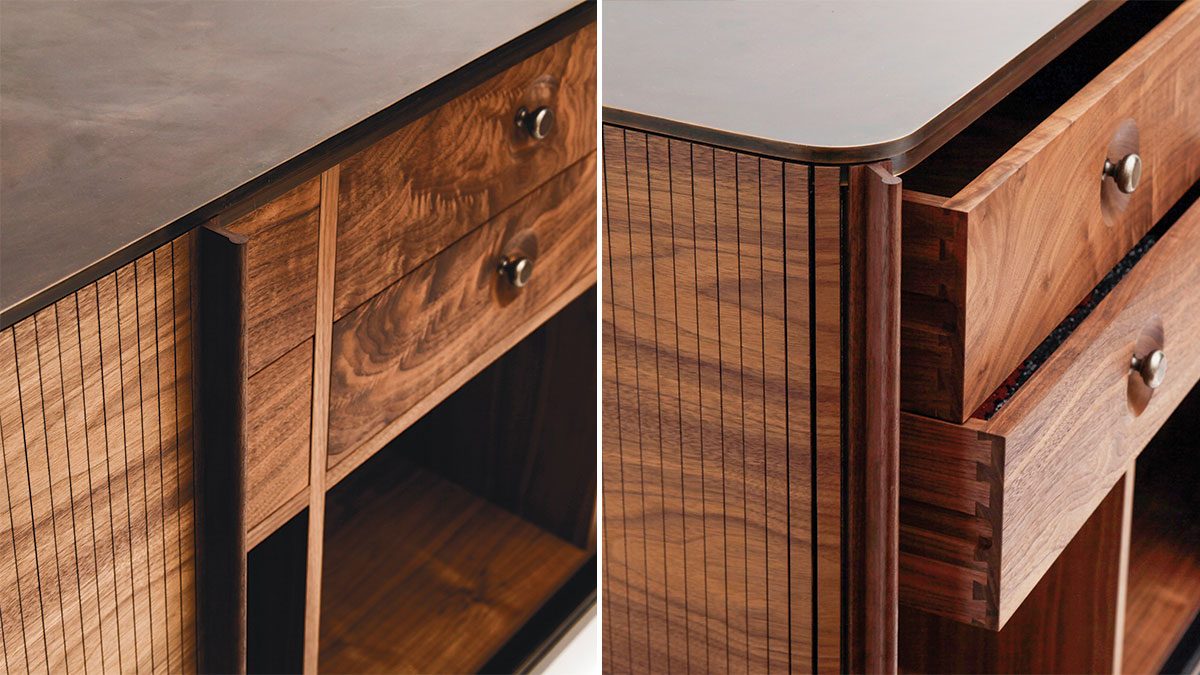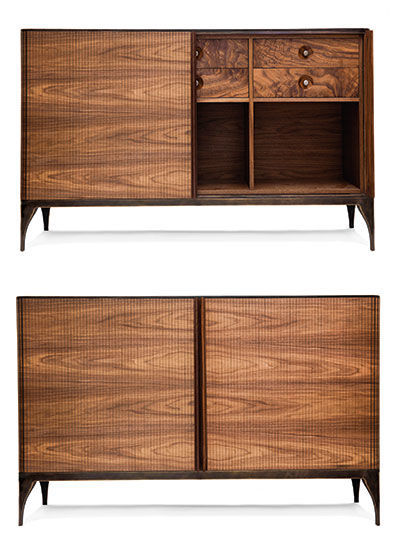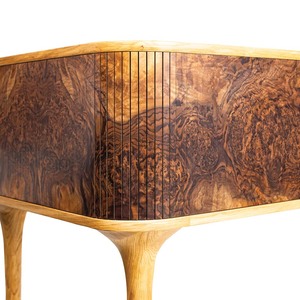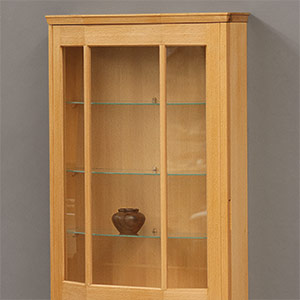Open a typical tambour door and as you slide it aside, the slats disappear into the cabinet. You can only wonder where they go. Furniture designer Aaron Poritz wanted to keep the magic of the tambour out in the open. So he’s been designing cabinets with no fixed outer shell. The structure is on the inside and the tambours are on the outside. Open a door on one of his cabinets and the tambours ripple right around the corner, fully visible; they slide along the side and turn the corner to the back. Poritz’s collaborator, craftsman Karol Cylwik, who works with him in the Brooklyn Navy Yard, glues figured veneer to sheets of Baltic-birch plywood, slices the plywood into slats with a thin-kerf tablesaw blade, and glues the slats to canvas backing. The slats are slotted on the ends to fit over a narrow track, and once the tambours are in place the track is concealed, the action is smooth, and the visual effect is mesmerizing. To see the tambours in action, go to FineWoodworking.com/278.
























Comments
Great, but how does he make it?
I was wondering the same, how about a good article on that!
When will see how to make it?
It looks like the fabric is put on back in pieces?
I put mine on all in one piece. What holds it together? Can you see the baltic birch when it bends around the corners?
any idea how he puts the fabric on in pieces and why?
This article explains the concept. Different maker though, so I can't verify that techniques are exactly the same.
Ben... I am not sure I understood your response, but as "ztifpatrick" said, it would be a great article in your "advance techniques" section to show how the doors could be made. I would really look forward to reading it.
ben, who is the different maker?
is there a way to contact the author?
i would like to know if you can see the baltic birch edges when the tambour goes around the corner.
why is the black backing cut into strips and not left as one piece?
help please.
Somehow the tambour link I posted in my earlier reply didn't show up. https://www.finewoodworking.com/2013/08/01/reviving-the-tambour-door
We don't give out author contact information. Also, I can't figure out what you mean y cutting the backing into strips? Where do you see that?
in the video it looks like when they turn over the slats there is already black fabric on the backsides of the individual pieces.
at 24 seconds into the video they are turning over the slats.
it looks like the slats already have the fabric on the back. is this correct?
The slats are painted black on all but the face side, Thus you shouldnt see the baltic birch backing when it goes around a corner (just black). The black sides on the slats also give it a dramatic sort of on/off kind of flickering effect when it is rolled around the corners. Typically, the canvas is put on in one piece not multiple ones. That is the method I have used a few times in the quite distant past.
yes i totally understand. i have just finished my tv stand with the tambour doors. it looks awesome. i put my backing on all in one piece, like i have always done. thanks for explaining the edges were painted black.
I've been mulling over how this 'frame-less' style is constructed. What I've concluded so far is that it hinges on a tongue&grove style of joinery, but flipped from traditional construction. Where the door gets the grove and the frame gets a tongue. If I'm totally wrong on this, sorry (just a novice).
It would be nice if we could get some close-ups on the actual track.
My current thinking is to run a thin strip of metal which acts as the tongue (for durability and lessening the need for widening at the curves; which might distract the visual flow)
Log in or create an account to post a comment.
Sign up Log in